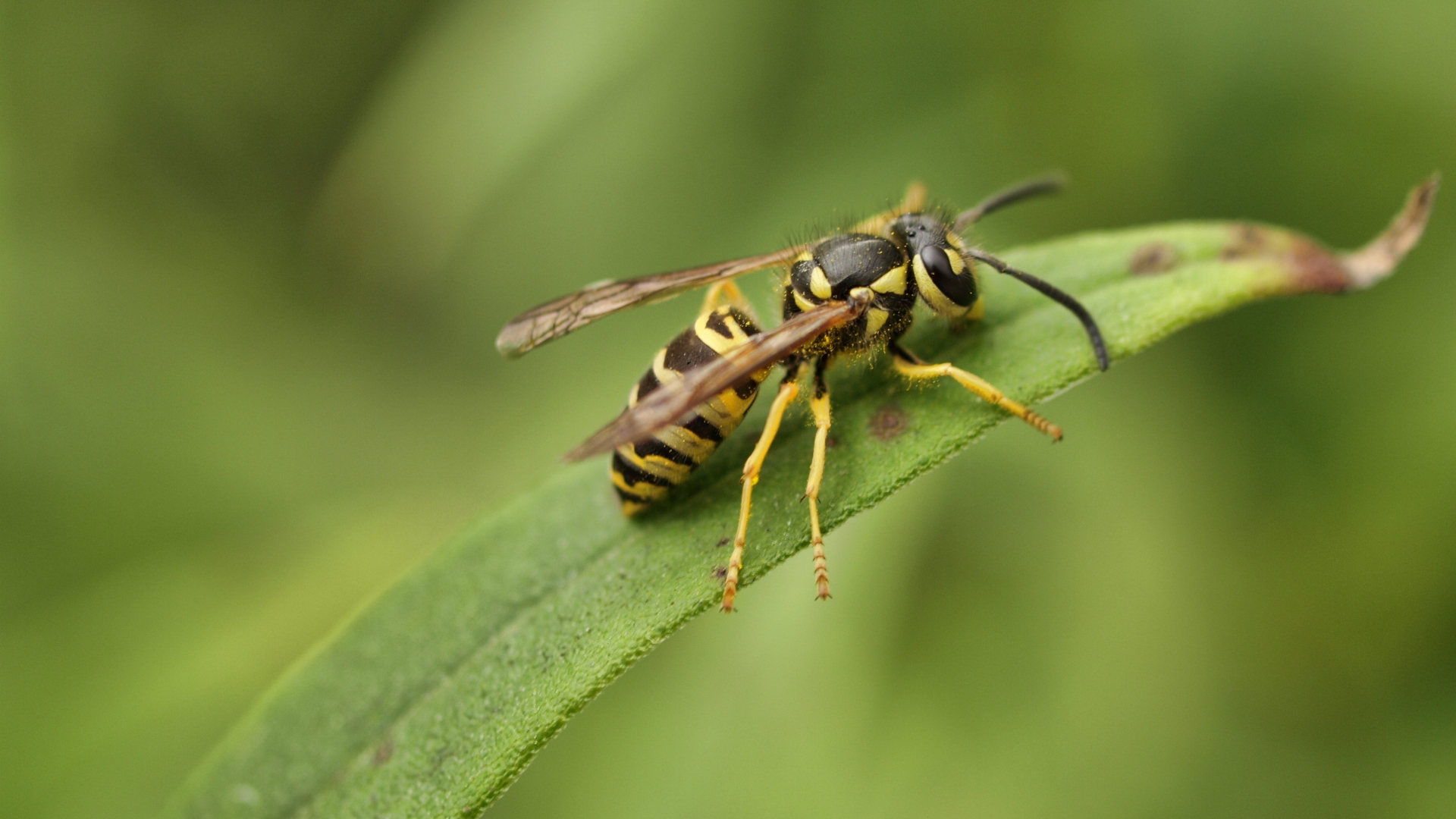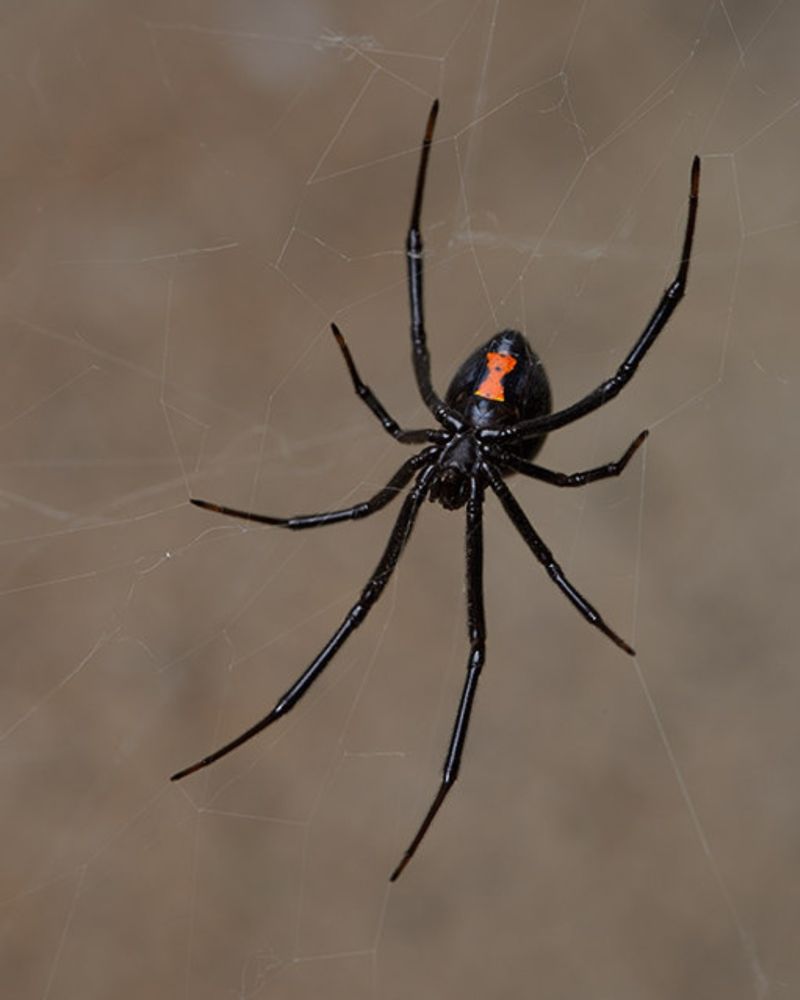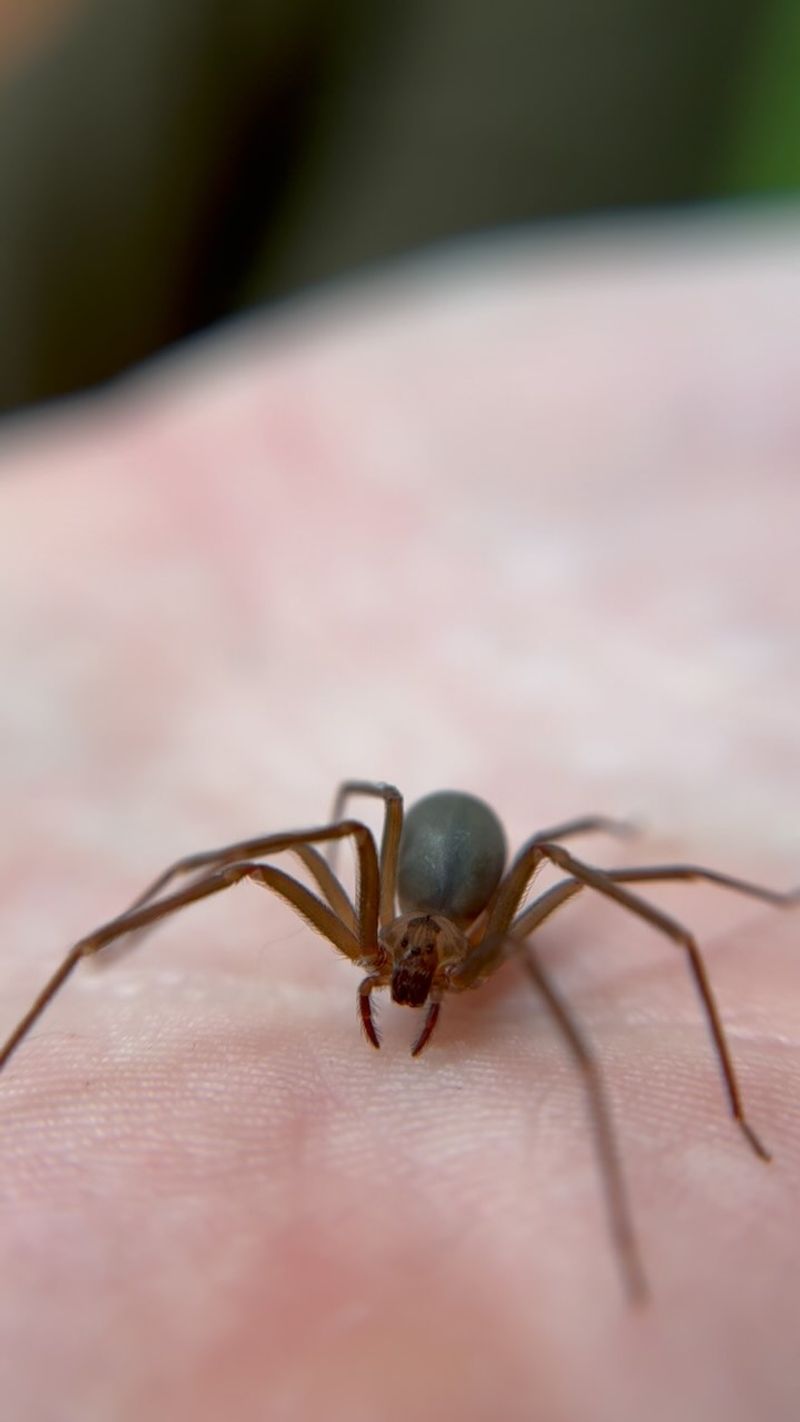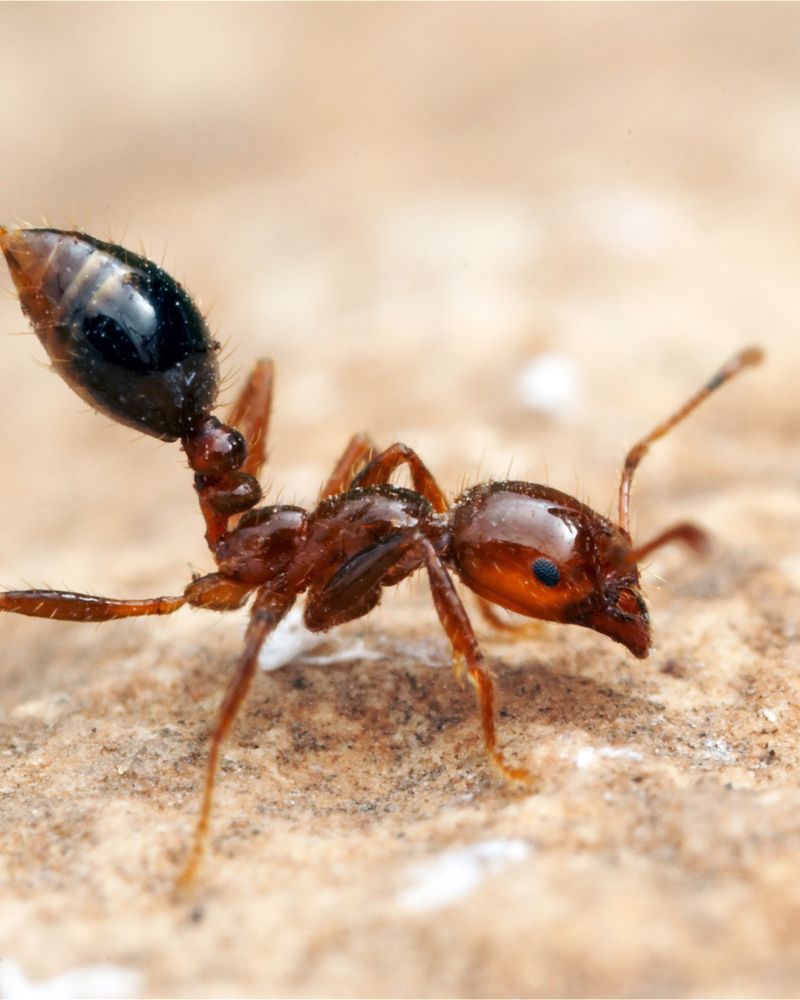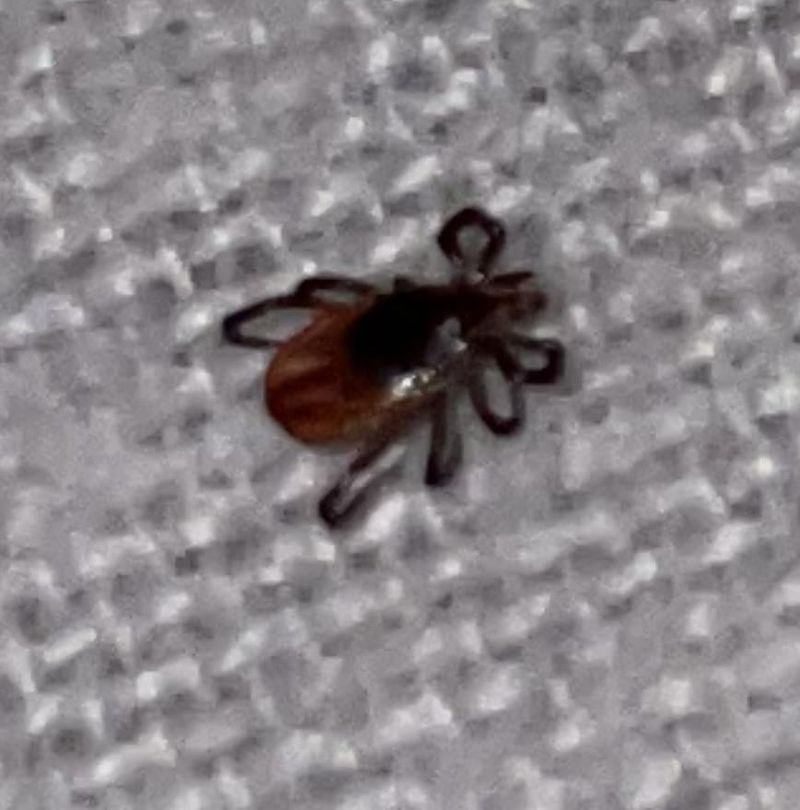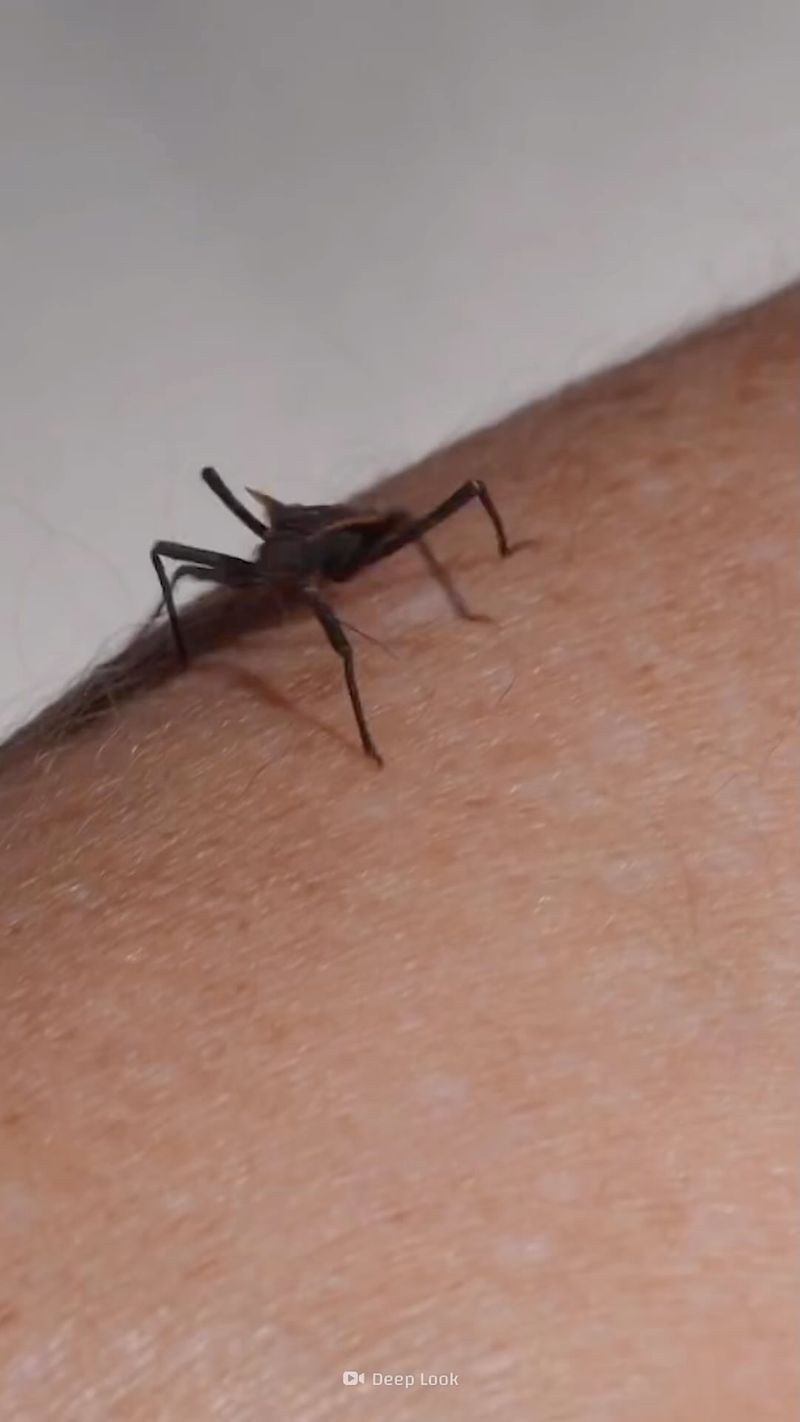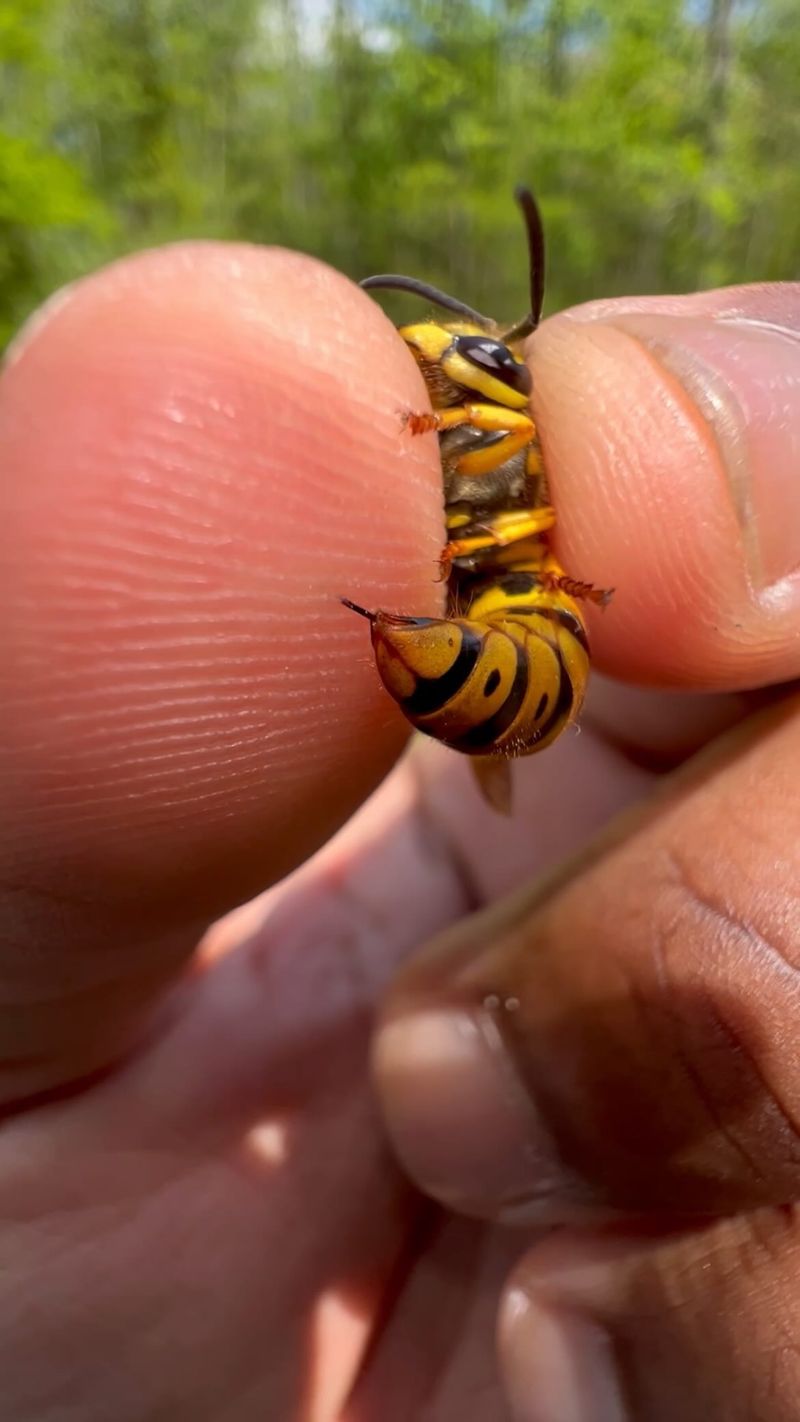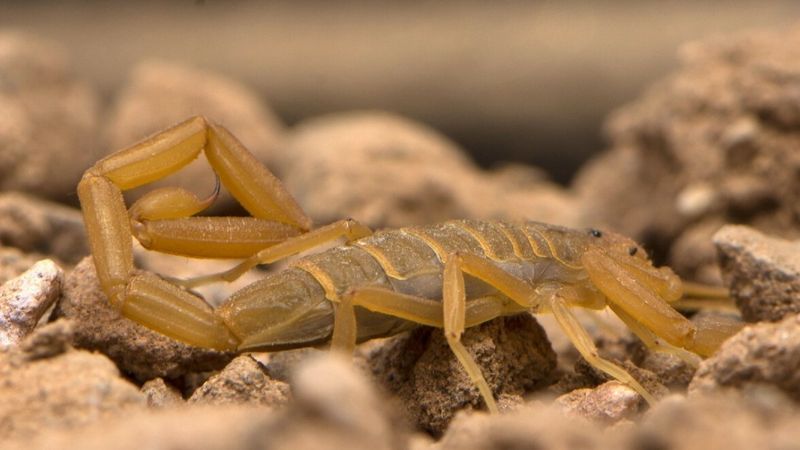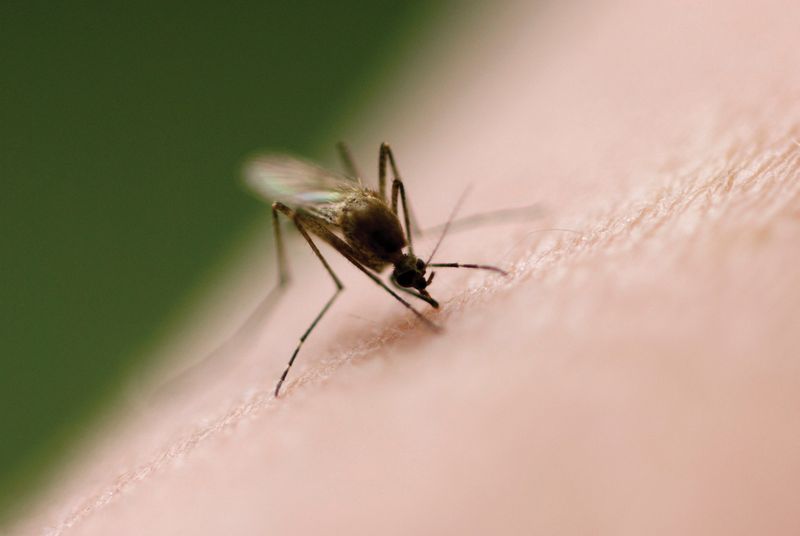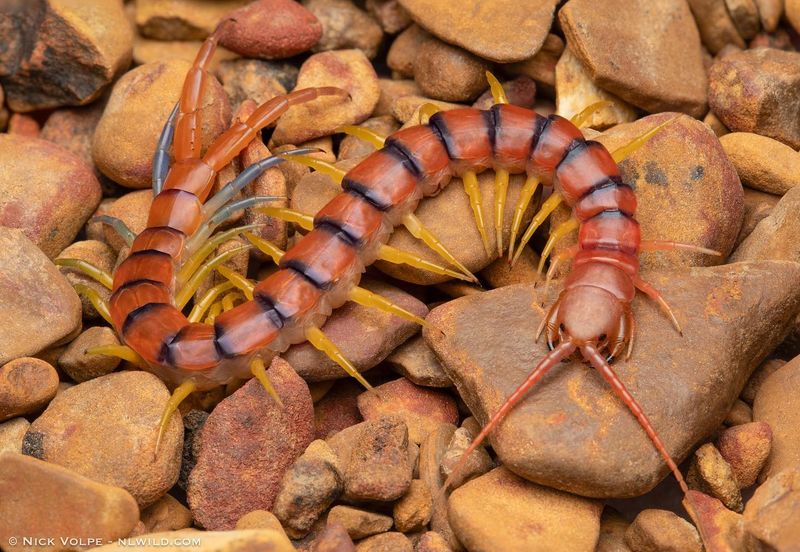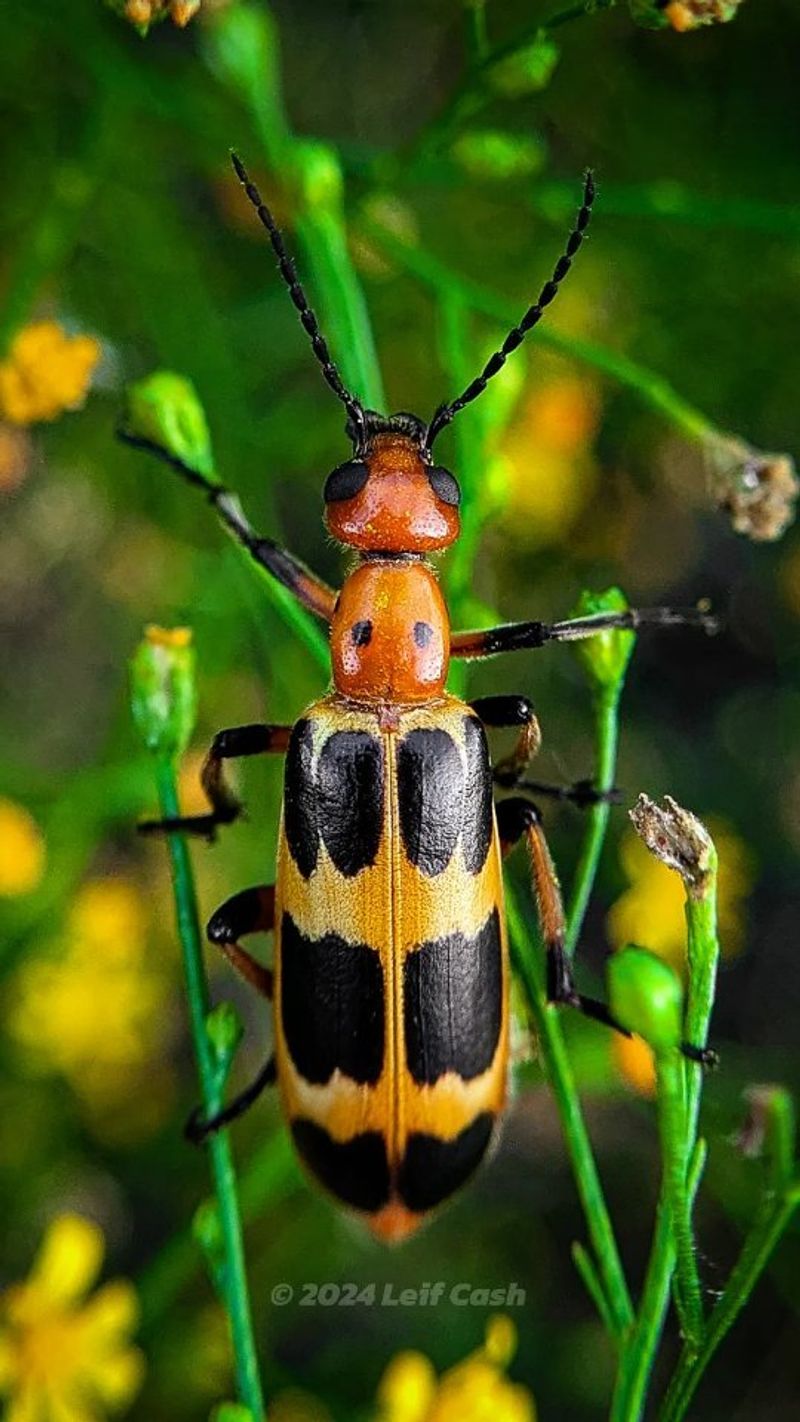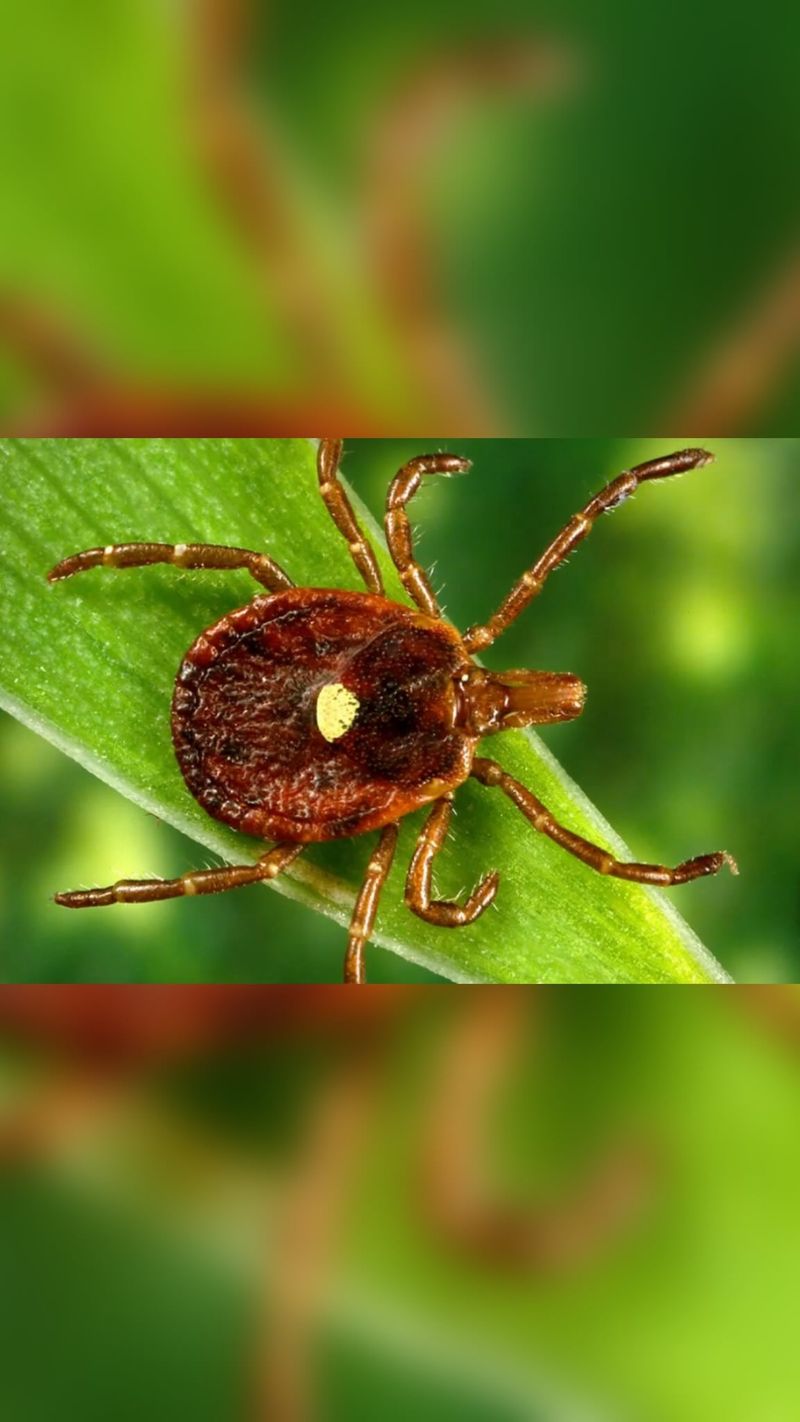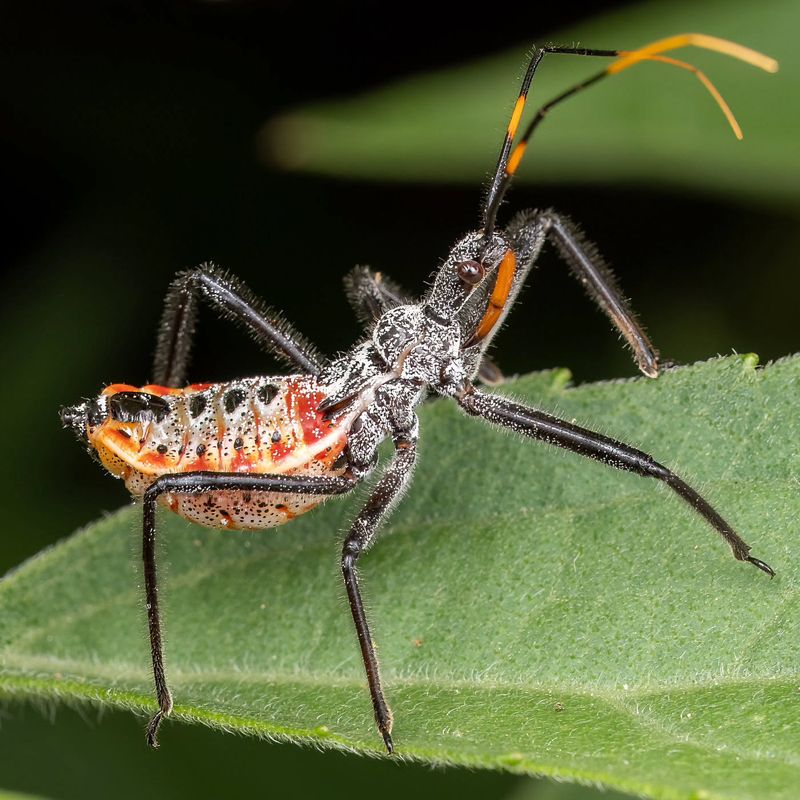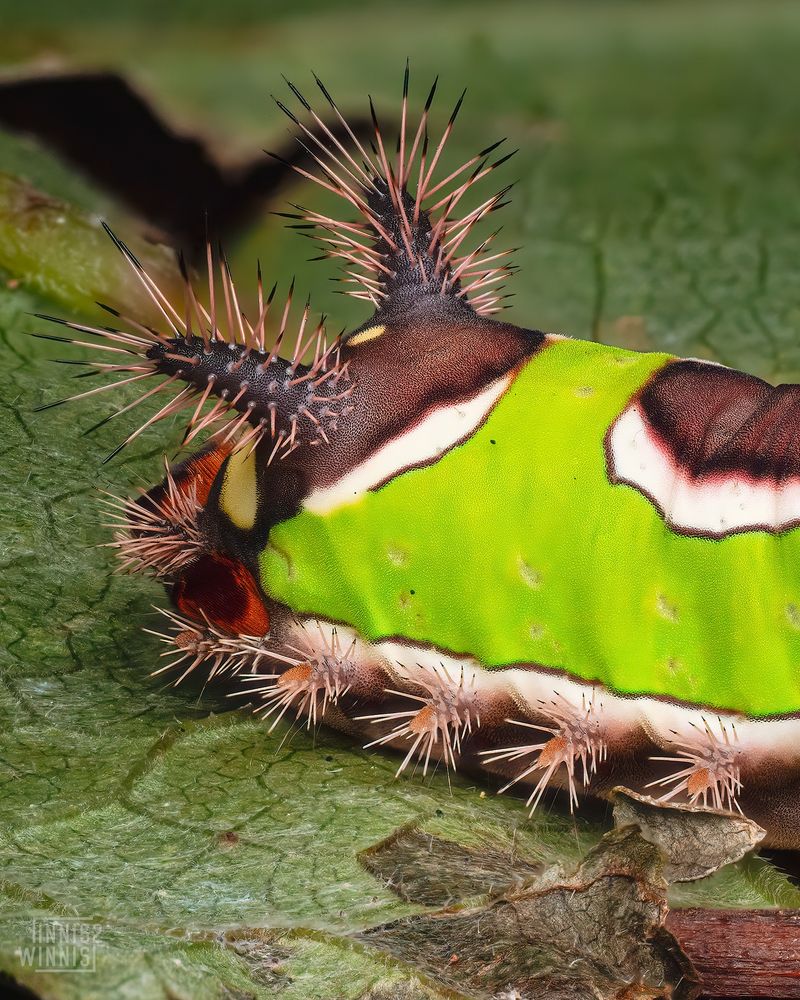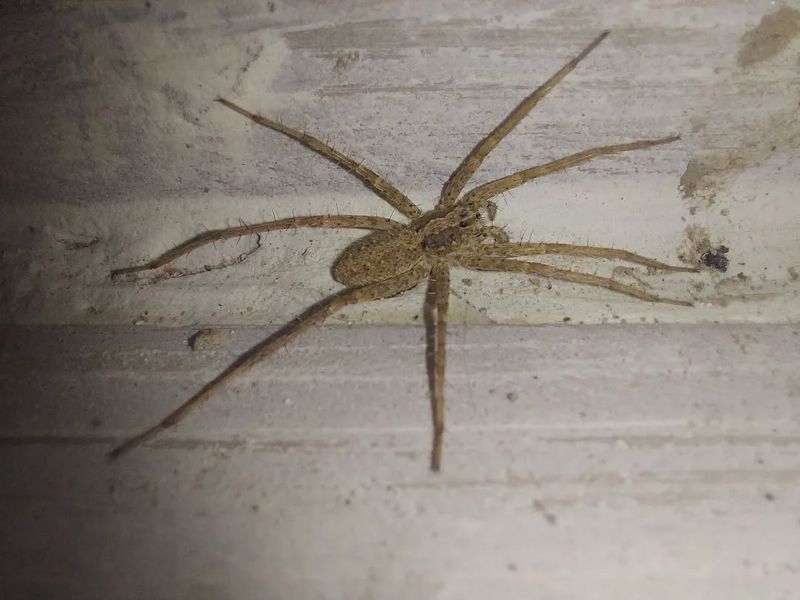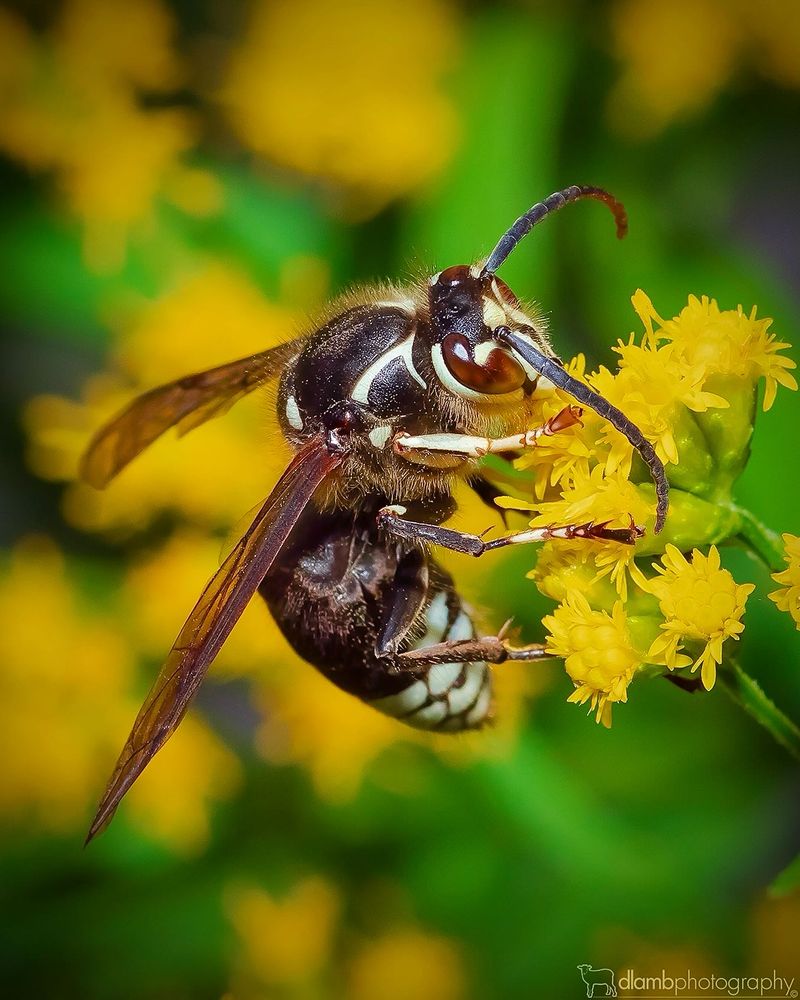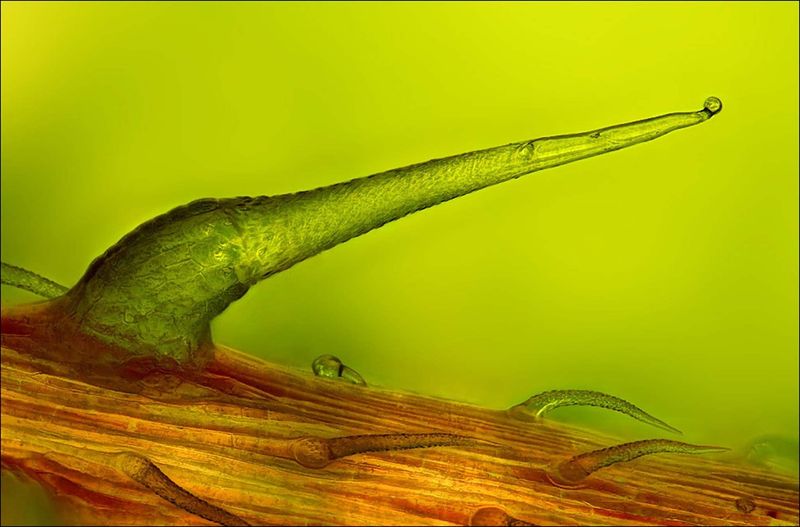Your backyard might seem peaceful, but some of the tiniest critters lurking around aren’t as harmless as they look. I’ve had a few close calls that made me rethink what’s really crawling out there.
These 17 little creatures may be small, but they can pack a punch—some even caught me totally off guard. It’s wild how something barely bigger than a pebble can cause such a stir.
Once you know what to watch for, you’ll never look at your yard the same way again!
1. Black Widow Spider
Those shiny black bodies with distinctive red hourglass markings aren’t just for show. Black widows pack venom 15 times stronger than a rattlesnake’s, though they deliver much less when they bite.
Females are particularly dangerous and typically hide in woodpiles, under eaves, or in garden clutter. Their bites cause intense pain, muscle cramps, and in rare cases, can be fatal to young children or elderly people if left untreated.
2. Brown Recluse Spider
Often mistaken for common house spiders, these secretive arachnids have a telltale violin-shaped marking on their backs. Their venom contains an enzyme that destroys tissue, potentially leaving nasty wounds that heal slowly.
Unlike aggressive hunters, brown recluses prefer hiding in undisturbed areas like garages, woodpiles, and storage boxes. What makes them particularly concerning is their tendency to hide in clothing or bedding, leading to accidental bites when humans disturb them.
3. Fire Ants
Don’t let their tiny size fool you – these aggressive insects attack in coordinated swarms when their mounds are disturbed. Each ant can sting multiple times, injecting venom that causes burning pain and itchy pustules.
For most people, fire ant stings are just painful nuisances. However, about 1% of people experience severe allergic reactions that can include difficulty breathing, dizziness, and even anaphylactic shock requiring immediate medical attention. A single colony can contain over 200,000 workers ready to defend their territory.
4. Deer Tick
Barely the size of a poppy seed, these tiny parasites are primary vectors for Lyme disease and several other serious infections. They typically lurk in tall grasses and wooded areas, waiting to latch onto passing hosts.
Once attached, deer ticks can feed for days, increasing the chance of disease transmission. The classic bull’s-eye rash doesn’t always appear after infectious bites, making early detection challenging. Regular tick checks after outdoor activities are crucial for preventing tick-borne illnesses.
5. Kissing Bug
Despite their romantic name, these blood-sucking insects are anything but lovable. They earned their nickname by preferring to bite humans around the mouth while they sleep, potentially transmitting Chagas disease through their feces.
Most active at night, kissing bugs hide in cracks and crevices during daylight hours. While common in Latin America, they’re increasingly found throughout the southern United States. Their bites often go unnoticed but can trigger allergic reactions in sensitive individuals.
6. Yellow Jacket
Unlike honeybees, these aggressive wasps can sting repeatedly without dying, making them particularly dangerous during late summer when colonies reach peak size. Yellow jackets build papery nests in the ground, inside wall voids, or hanging from structures.
They’re attracted to sweet foods and proteins, making them unwelcome picnic guests. For most people, multiple stings cause significant pain, but for those with allergies, even a single sting can trigger anaphylaxis – a potentially life-threatening reaction requiring immediate medical attention.
7. Scorpion
Several scorpion species call backyards home across the southern United States, with the bark scorpion being particularly venomous. These nocturnal arachnids glow under ultraviolet light, making nighttime detection possible with special flashlights.
Most scorpion stings cause intense pain, swelling, and numbness. However, bark scorpion venom can cause more serious symptoms like difficulty breathing, muscle spasms, and in rare cases, death – especially in children and elderly people. They often hide in woodpiles, under rocks, or even inside shoes.
8. Mosquito
Perhaps the world’s deadliest animal, these ubiquitous insects transmit diseases that kill over a million people annually worldwide. Only females bite, using specialized mouthparts to pierce skin and suck blood while injecting saliva containing anticoagulants.
Beyond the familiar itchy welts, mosquitoes can transmit West Nile virus, dengue, Zika, and several types of encephalitis in North America. Standing water as small as a bottle cap provides enough breeding habitat for these persistent pests to multiply in your yard.
9. Centipede
House centipedes with their numerous legs and alarming speed often trigger fear, but their larger garden relatives pose actual danger. Armed with modified front legs called forcipules that inject venom, centipedes can deliver painful bites when handled.
Most North American species cause reactions similar to bee stings – painful but not medically significant. However, larger species in southern states can cause intense pain, swelling, and occasionally systemic symptoms like headache and nausea. Despite their intimidating appearance, they help control other pest populations.
10. Blister Beetle
These unassuming insects contain a toxic compound called cantharidin that causes painful skin blisters upon contact. When crushed or irritated, they release this substance as a defense mechanism against predators.
Gardeners often encounter blister beetles while handling plants where these insects feed. The blisters typically heal without scarring but can be quite painful and take over a week to resolve. In large quantities, cantharidin can be deadly if ingested, making these beetles particularly dangerous to livestock feeding on contaminated hay.
11. Lone Star Tick
Recognizable by the distinctive white spot on females’ backs, these aggressive ticks actively hunt their hosts rather than passively waiting. Their bites can transmit several diseases, including ehrlichiosis, tularemia, and Heartland virus.
Perhaps most unusual is their ability to trigger alpha-gal syndrome – a potentially life-threatening allergic reaction to red meat. After certain Lone Star tick bites, some people develop antibodies that react to a sugar molecule in mammalian meat, causing delayed allergic reactions hours after eating beef, pork, or lamb.
12. Assassin Bug
Armed with a powerful stabbing rostrum, these predatory insects hunt other bugs but don’t hesitate to defend themselves against humans. Unlike their kissing bug relatives, most assassin bugs don’t transmit disease but compensate with extraordinarily painful bites.
Victims describe the sensation as being hammered by a hot nail, with pain radiating from the bite site. While the intense discomfort typically subsides within hours, localized swelling and tissue damage can persist for days. Despite their fearsome reputation, these beneficial insects help control garden pests.
13. Saddleback Caterpillar
Beneath this caterpillar’s striking appearance lies a painful surprise – its body is covered with venomous spines that break off in skin upon contact. The distinctive green “saddle” on its brown back serves as a warning coloration that many people unfortunately ignore.
Brushing against these caterpillars causes immediate burning pain followed by inflammation that can last for days. They typically feed on deciduous tree leaves but can drop onto unsuspecting gardeners below. Children are particularly vulnerable when climbing trees or exploring foliage where these caterpillars feed.
14. Hobo Spider
Often confused with harmless house spiders, hobo spiders build funnel-shaped webs in dark corners, woodpiles, and foundation cracks. Their bites were once thought to cause necrotic wounds similar to brown recluse spiders, though recent research questions this reputation.
Nevertheless, hobo spider bites can cause significant pain, redness, and swelling. These fast-moving arachnids typically avoid humans but may bite when threatened or accidentally pressed against skin. Males wander during mating season, increasing human encounters during late summer and early fall.
15. Puss Caterpillar
Don’t be fooled by its cute, fuzzy appearance – this caterpillar (also called asp) hides venomous spines beneath its soft-looking hair. Contact causes immediate intense pain that radiates to lymph nodes, often accompanied by nausea, headache, and sometimes shock-like symptoms.
These caterpillars frequently inhabit ornamental trees and shrubs in southern states. Their sting is considered one of the most painful of any insect in North America. Children are particularly vulnerable because they may be attracted to the caterpillar’s soft, pet-like appearance.
16. Bald-faced Hornet
Despite their name, these large black and white insects are actually wasps, not true hornets. They build large paper nests in trees, shrubs, and building overhangs – often going unnoticed until fall when leaves drop.
Extremely territorial, bald-faced hornets attack in coordinated swarms when their nest is threatened, even from a distance. Their smooth stingers allow multiple painful stings, injecting venom that causes intense burning. For allergic individuals, these stings can trigger life-threatening reactions requiring immediate emergency care.
17. Stinging Nettle
This common weed’s innocent appearance conceals thousands of tiny, hollow hairs that act like hypodermic needles. When brushed against, these fragile hairs break off and inject a cocktail of irritating chemicals including formic acid, histamine, and acetylcholine.
Contact causes immediate burning pain, itching, and a rash that can last for hours. While rarely dangerous, the intense discomfort can be especially distressing for children. Ironically, this plant has medicinal properties when properly prepared, but most backyard encounters leave only painful memories.

